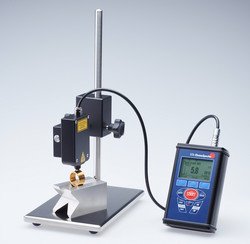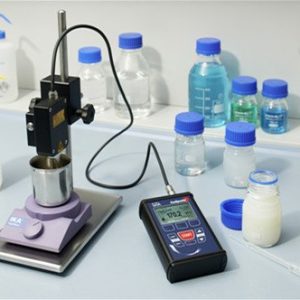The hand-held measuring device SITA CleanoSpector is highly suited for cleanliness inspection of parts to assure product quality as well as follow-up processes such as adhesive bonding, coating, welding, hardening, and bonding.
Unwanted, filmic contamination such as oils, greases, cooling lubricants, and release agents are measured by determining the fluorescence intensity.
The SITA CleanoSpector is easy to use and optimal for quality assurance directly in the manufacturing process.
Features:
Mobile and robust device for flexible use at the process and in the laboratory
Intuitive operation: simple and fast operation at the push of one button
A device with easy to handle sensor head and display unit enables measurement with a small contact area as well as different application possibilities
Check and adjust with calibration standards
Characteristics
| Quantity | Fluorescence intensity in RFU |
| Fields of application | Cleanliness inspection prior to gluing, painting, coating, welding, hardening, bonding …
Coating thickness inspection oil for rust prevention, primer application before gluing |
| Use | Detection of oil, grease, cooling lubricant, parting agents, …
on parts and components made of metal, ceramics, and glass (limited suitability for plastics) |
| Measurement | Contact-free, non-destructive, in-line capable, thickness sensitive |
| Measurement monitoring | SITA Fluorescence standards (standard delivery and option) |
| Industry | Automotive, machine construction, mechanical engineering, medical engineering, electrical engineering, surface engineering, air and space … |
For 10 years the SITA CleanoSpector is used successfully and worldwide in various applications and industries:
●Cleanliness inspection of metal parts after machining
●Inspection of functional surfaces after selective cleaning (laser cleaning, ultra-fine plasma cleaning, CO2 snow blasting, …)
●Inspection for residues of release agent on aluminum die-cast parts prior to adhesive bonding
●Monitoring the cleanliness of metal parts before laser welding
●Inspection for filmic contamination on parts in medical- or vacuum a technology
● Detecting residual agents and encapsulation material on bond pads before bonding
●Surface inspection on electrical contacts after stripping of isolation material
●Inspection for sufficient layer thickness when applying corrosion protection oils or when applying a primer prior to adhesive bonding


